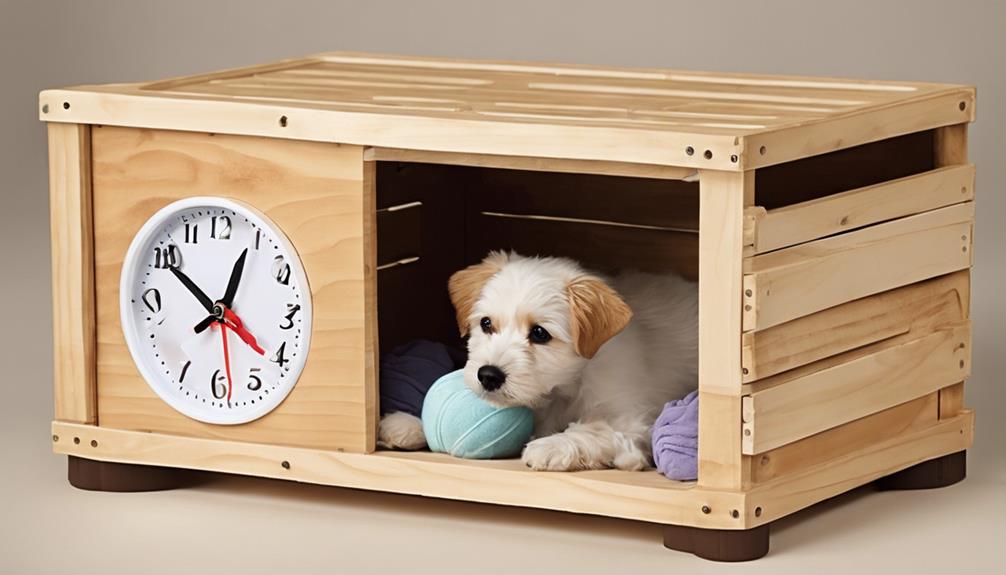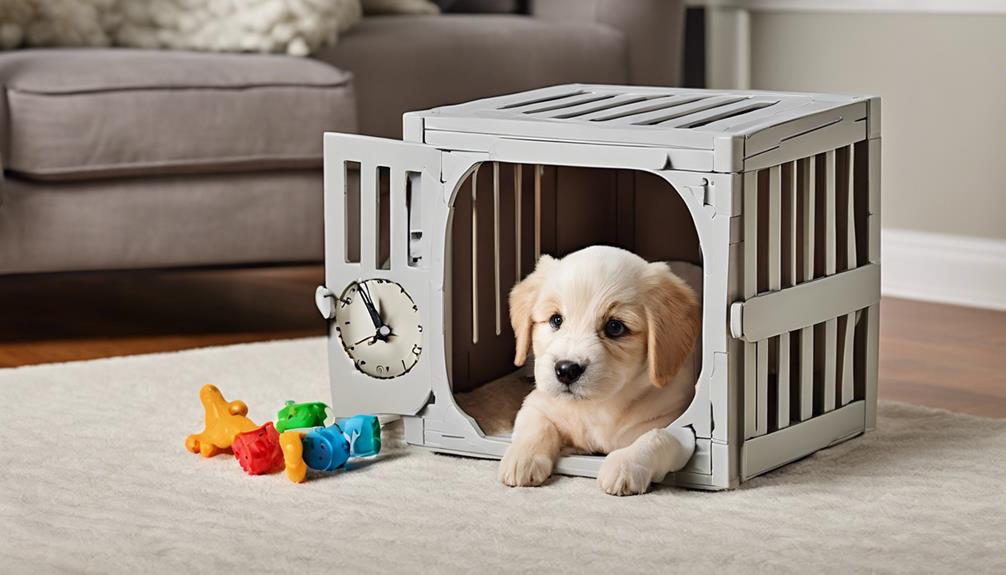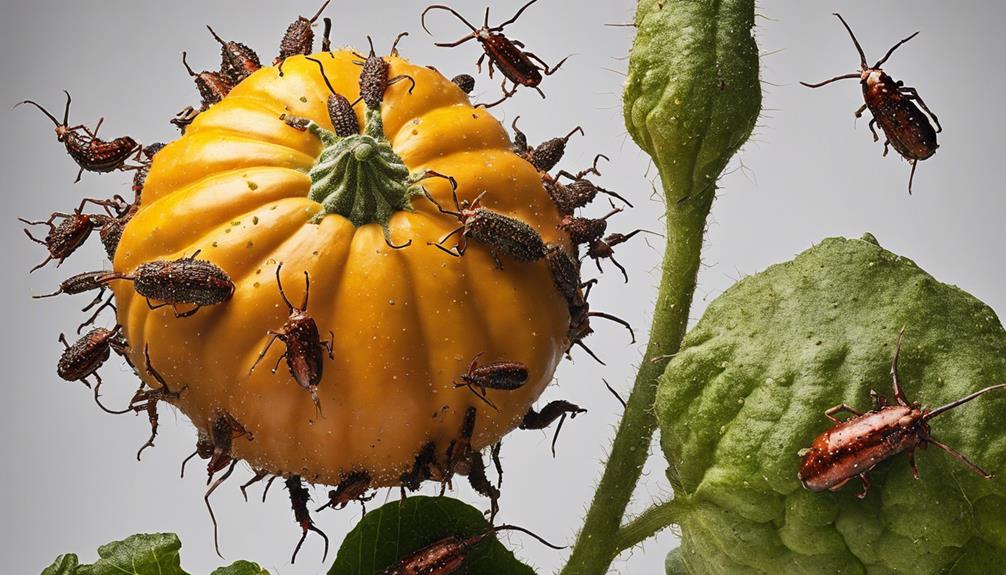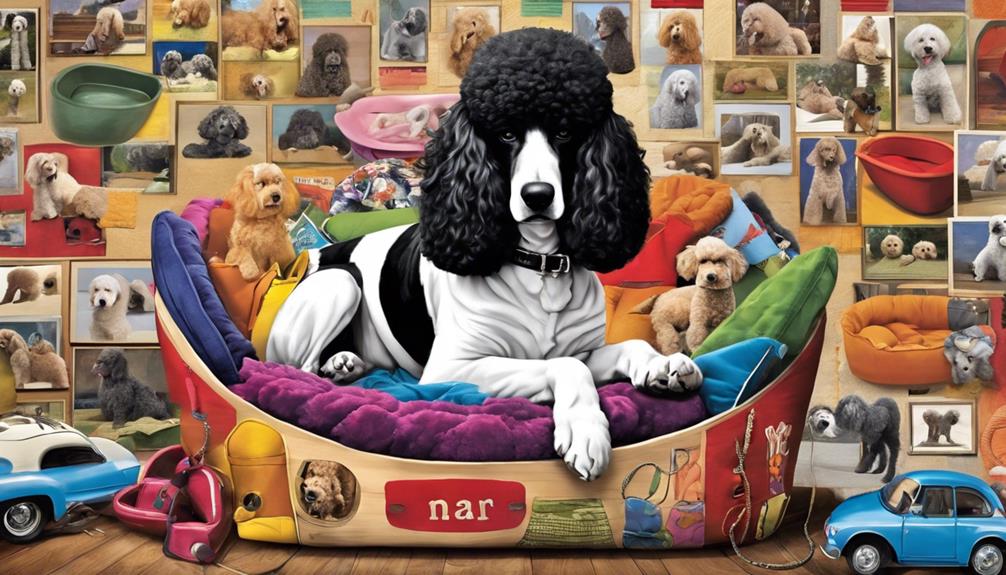Training a 3-month-old puppy with a crate is crucial for their routine and growth. Create a consistent schedule with designated crate timings, play breaks, and gradual transitions to aid in the puppy’s adjustment. Maintaining consistency is essential for promoting positive behavior and comfort in the crate. Keep in mind, a well-organized crate training routine not only helps the puppy but also strengthens the bond between you and your furry companion.
Further insights into crate training techniques can offer additional guidance for your puppy's growth and well-being.
Key Takeaways
- Establish a structured routine with 3-4 hours of crating during the day.
- Incorporate playtime and training sessions between crate intervals.
- Gradually increase crate time to help the puppy adjust comfortably.
- Maintain consistency in the schedule to establish a routine.
- Seek professional guidance for tailored advice on common crate training issues.
Benefits of Crate Training a 3-Month-Old Puppy
Crate training our 3-month-old puppy offers numerous benefits that contribute to establishing a structured routine for potty training and aiding in our family's adjustment. This method provides a safe space where our puppy can feel secure and relaxed, reducing anxiety and stress.
Using positive reinforcement techniques during Puppy Crate Training helps promote good behavior, set boundaries, and foster independence in our furry companion. Additionally, crate training assists in controlling destructive behavior, making it easier to manage our puppy when we're away or during travel.
Essential Supplies for Crate Training

When preparing for crate training, it's essential to gather the necessary supplies that will aid in creating a positive and comfortable environment for our puppy. The first item needed is a suitable crate that's appropriately sized for the puppy. This crate will serve as a safe space for the puppy to rest and relax. To make the crate cozy, a soft blanket or crate pad can be placed inside for added comfort.
Toys are essential for keeping the puppy entertained while in the crate. Interactive toys or chew toys can help alleviate boredom and prevent destructive behavior. Treats are valuable tools for positive reinforcement during crate training. Using treats to reward good behavior will encourage the puppy to view the crate as a positive space.
Additionally, incorporating the puppy's feeding schedule into crate training can help establish a routine. This can also aid in house training by creating a schedule for when the puppy eats and goes outside. Being prepared with these essential supplies will set the stage for successful crate training and help address common issues like puppy whining.
Establishing a Consistent Crate Routine
To guarantee successful crate training, establishing a consistent routine for our puppy is key in promoting positive behavior and routine adherence. A structured schedule should include specific times for crate confinement, elimination breaks, exercise periods, and direct supervision.
Incorporating mealtime food as training treats can reinforce positive behavior and create a positive association with the crate. When not in the crate, make sure the puppy is under direct supervision or in a puppy-proof area to prevent accidents and promote safety.
Nap times in the crate should be integrated into the daily routine to familiarize the puppy with the space and encourage relaxation. Offering high-value rewards, such as treats or praise, for successful eliminations can help reinforce desired behavior and create positive reinforcement.
Sample Crate Training Schedule for 3-Month-Old

Implementing a structured routine for a 3-month-old puppy's crate training is essential for fostering positive behavior and successful adaptation to the crate environment.
When creating a sample crate training schedule for a 3-month-old puppy, consider the following key points:
- Up to 3-4 Hours: Remember that a 3-month-old puppy can typically be crated for up to 3-4 hours during the day.
- Playtime and Training Sessions: Incorporate playtime and short training sessions in between crate intervals to keep the puppy engaged and mentally stimulated.
- Gradually Increase Crate Time: Gradually increase the time spent in the crate to help the puppy adjust and prevent accidents.
- Consistency in the Schedule: Maintain consistency in the schedule to establish a routine and help the puppy understand expectations.
Troubleshooting Common Crate Training Issues
As we troubleshoot common crate training issues, addressing whining in the crate is typically the first step towards fostering positive behavior and comfort for the puppy. When dealing with whining, make sure the puppy's needs are met before crating to rule out discomfort or medical issues. Utilize positive reinforcement techniques and rewards for calm behavior inside the crate. Gradually increase crate time to help the puppy adjust and feel more comfortable in the confined space. If problems persist, consider seeking guidance from a professional trainer or veterinarian who can offer tailored advice on specific crate training issues.
| Common Crate Training Issues | Solutions |
|---|---|
| Whining in the crate | Address puppy's needs before crating, rule out discomfort or medical issues, use positive reinforcement and rewards. |
| Discomfort | Ensure crate is comfortable, add bedding or toys, check for drafts or noise disturbances. |
| Lack of adjustment | Gradually increase crate time, make crate a positive space, offer treats and rewards for entering willingly. |
| Seeking professional help | Consult with a professional trainer or veterinarian for personalized guidance and support. |
Frequently Asked Questions
What Is a Good Crate Training Schedule for Puppies?
We've mastered the art of crate training! Prioritize comfort, keep crating to 2 hours during the day, and 6 hours at night. Consistency is our secret weapon. Potty breaks and playtime are non-negotiable for a happy, well-adjusted puppy.
How Much Time Should a 4 Month Old Puppy Crate?
We recommend crating a 4-month-old puppy for up to 4 hours during the day. Take them out for potty breaks every 2-3 hours when not crated. Adjust crating time based on their signals and needs.
Is a 6 Month Old Puppy Too Old to Crate Train?
We believe a 6-month-old puppy is not too old to start crate training. It can still benefit from the routine, behavior improvement, and security a crate provides. Consistency and patience are essential for successful crate training.
How Often Should Puppy Be in Crate During Training?
During training, we gradually increase crate time, ensuring it doesn't exceed the puppy's age in months plus one. Adjust based on signals and needs. Consistent crate use at night supports house training. Regular pee breaks are essential.
Can the Crate Training Schedule for 3-Month-Old Puppies Be Adapted for 4-Month-Old Puppies?
Yes, the crate training schedule for 3-month-old puppies can be adapted for 4-month-old puppies. It’s important to gradually increase the time spent in the crate and continue using positive reinforcement. By slowly adjusting the schedule, the transition can be smooth and effective for crate training for puppies.
How Can Crate Training Schedule Help with Dog Daycare?
Crate training schedule is essential for dog daycare. Following dog daycare tips for pet parents can help ease the transition. Regular crating times at home will prepare your dog for daycare routines, making the experience less stressful. Consistency and patience are key to successful crate training for dog daycare.
Conclusion
To sum up, crate training a 3-month-old puppy is a game-changer for both the pup and the owner.
With the right supplies, routine, and schedule in place, you'll see incredible progress in your furry friend's behavior in no time.
Say goodbye to chewed shoes, accidents on the carpet, and late-night whining.
Trust us, crate training is the key to a harmonious and stress-free relationship with your new furry family member.










